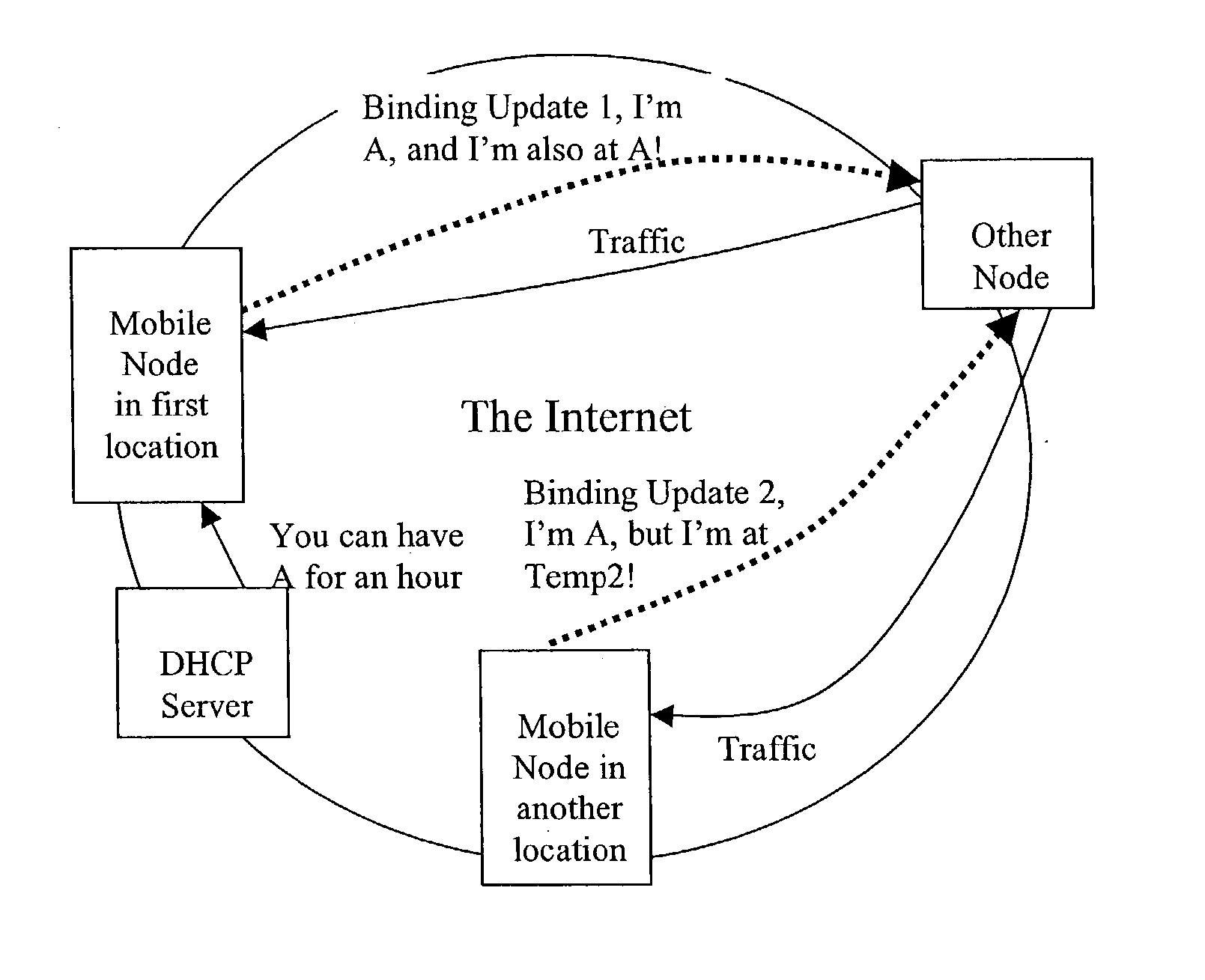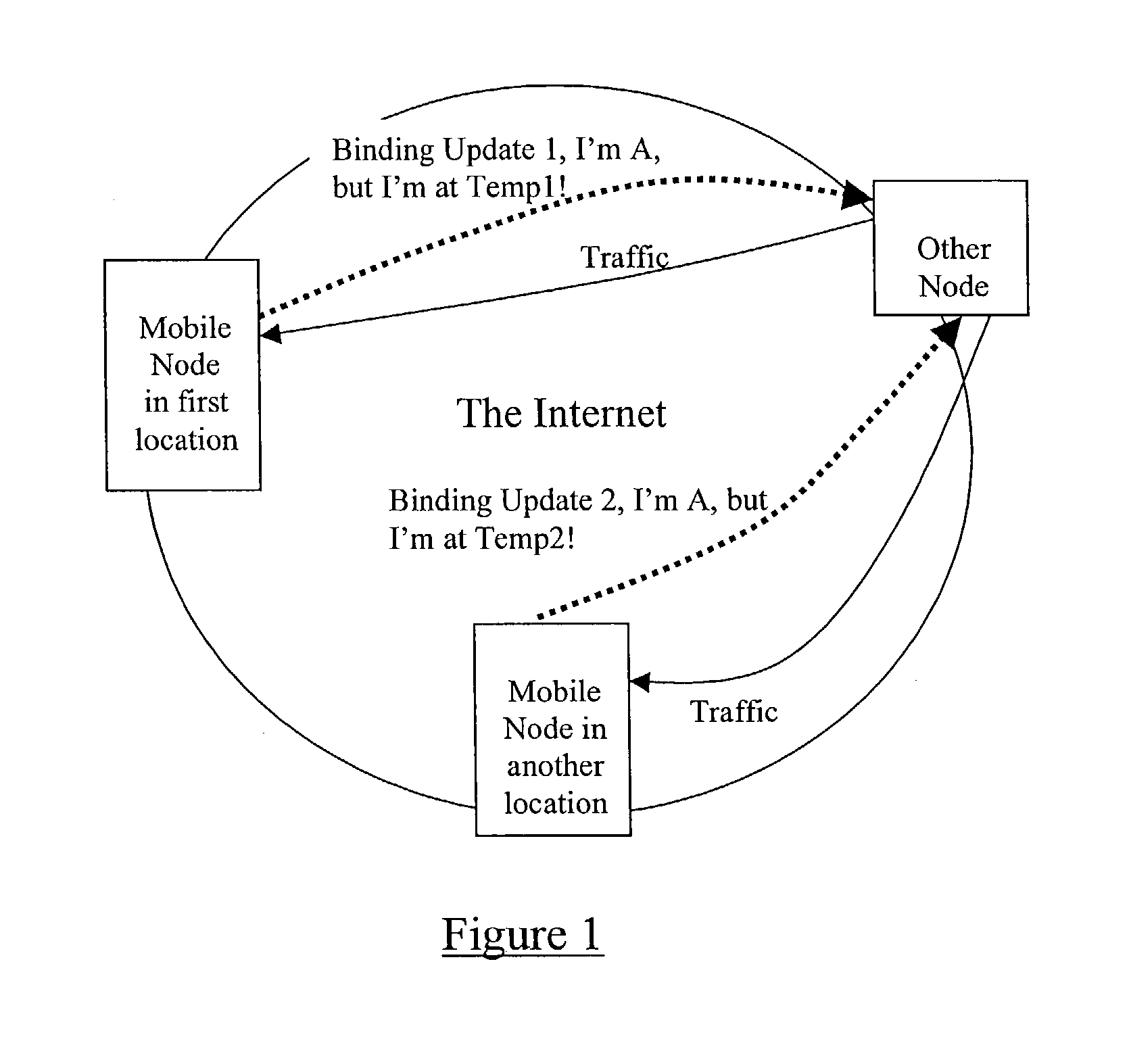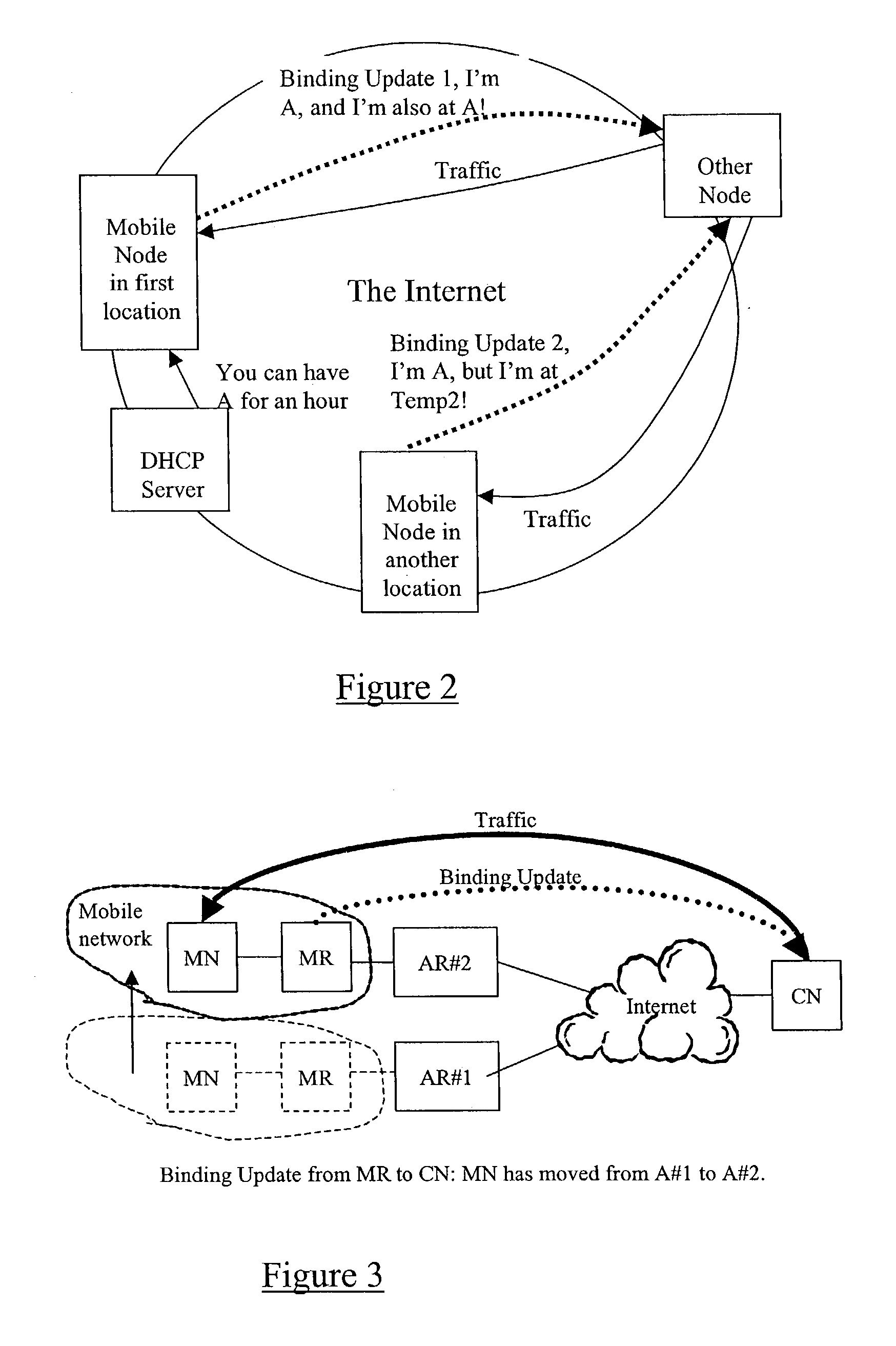Addressing mechanisms in mobile IP
a technology of addressing mechanism and mobile ip, which is applied in the direction of securing communication, digital transmission, instruments, etc., can solve the problems of limited and conditional delegation of responsibility for ip address, and the inability of dhcp server to allow a node, so as to facilitate the sending of binding update messages
- Summary
- Abstract
- Description
- Claims
- Application Information
AI Technical Summary
Benefits of technology
Problems solved by technology
Method used
Image
Examples
Embodiment Construction
[0047] For the purpose of the following examples it is assumed that an IP network node owning an IP address possesses a public-private key pair where P denotes the public key and S denotes the private or secret key. The node generates the IP address using the algorithm A=R:h(P), where R is some routing prefix which may belong to the node itself or which may be received at the node from some other node (e.g. an access node). The function h is some one-way function, such as a cryptographic hash. When the node (owning the IP address) sends a binding update to a correspondent node according to the Mobile IP protocol, it includes in the message its public key P. The sending node additional generates a signature by applying some reversible cryptographic function and the secret key S to the contents of the message, and adds the signature to the message.
[0048] When the correspondent node receives the binding update it first verifies that the signature is correct by applying the reversible c...
PUM
 Login to View More
Login to View More Abstract
Description
Claims
Application Information
 Login to View More
Login to View More - R&D
- Intellectual Property
- Life Sciences
- Materials
- Tech Scout
- Unparalleled Data Quality
- Higher Quality Content
- 60% Fewer Hallucinations
Browse by: Latest US Patents, China's latest patents, Technical Efficacy Thesaurus, Application Domain, Technology Topic, Popular Technical Reports.
© 2025 PatSnap. All rights reserved.Legal|Privacy policy|Modern Slavery Act Transparency Statement|Sitemap|About US| Contact US: help@patsnap.com



